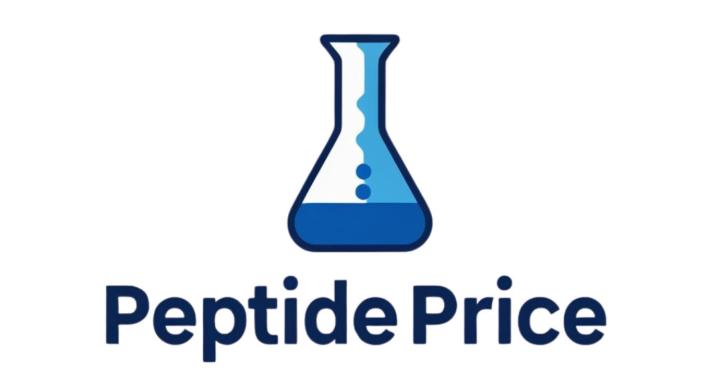
Write something
Pinned
Peptide Price Link + Research Supplies
https://peptideprice.store I've had some people ask me what insulin syringes I use and so on. Here is all the stuff I use and order straight through Amazon. Peptide Supplies: https://www.amazon.com/shop/derber/list/1MW324GL6JQPN?ref_=hype_hm_sf_e TikTok and other Socials: https://linktr.ee/Derber
Pinned
🏆 Review & Win - Felix Chem $50 Gift Card September Giveaway
You asked for it, and we're delivering again for September! An Even Better Thank You Your enthusiasm from our previous giveaways has been incredible! As our community continues to grow and thrive, we're excited to announce another exclusive opportunity - available only to our valued Skool community members. In partnership with Felix Chem, we're giving away TWO $50 gift cards that can be used toward any peptide purchase! 📋 How to Participate Simple 3-Step Process: 1️⃣ Make Your Purchase - Order anything from any peptide site linked on http://peptideprice.store/ - Promotion Period: September 22nd - October 21st, 2025 - Any amount qualifies! 2️⃣ Share Your Experience - Leave a detailed review for your order on peptideprice.store/reviews - Include your order number (we'll verify for authenticity) - Tell us what you loved about your experience 3️⃣ Submit Your Entry - Screenshot your review peptideprice.store/reviews - Comment on this post with your screenshot - That's it - you're entered! 🏆 Prize Details - Two Winners will be selected - $50 Gift Card each - Valid for use on any peptide products - Winners will be announced after the promotion period ends ⚡ Important Notes - Exclusive to Skool Community Members Only - Order verification required - One entry per person - Must complete all steps within the promotional period - Reviews must be genuine and detailed Questions? Drop a comment below or reach out directly. Good luck to everyone participating! Thank you for being an amazing part of our community! 🙏 This promotion is exclusive to our Skool community and runs from September 22nd - October 21st, 2025. Winners will be selected based on completed entries following all requirements. ADDED GIVEAWAY: Two (2) premium 100-count 3ml storage cases from 3D Peppy - perfect for organizing your peptide collection! Check out the unboxing below to see these bad boys in action!

Pinned
Peptides Saved My Life + Peptide Price Inspiration
Hey Everyone, not all of you guys know who I am or why I started the site https://peptideprice.store. I would appreciate it if you gave this full video a watch and leave your experiences on this post. Peptides actually changed my life GLP-1s in specific and I wanted to do the same for other people without spending all their income. I don't run peptide price for a business, I actually have a passion for this because I know how many people it can help. You guys have been an amazing community and I am blessed to have you guys in my life. Thank you for joining! How I got inspired to build the app: I was running accutane because I’ve struggled with terrible breakouts and cystic acne for years started in November. Honestly didn’t even have the confidence to look myself in the mirror. I had the worst symptoms ever dry eyes, sinus infections because my body couldn’t handle it and I was miserable. I was like I’m gonna make the best out of this time if I can’t really do much outside of work and the gym when I wasn’t sore as hell. Tirz changed my life around the same time because I was dealing with so much food noise. I previously lost over 75 lbs without a GLP-1. Then trying to maintain that body weight made my life hell just couldn’t stop thinking about food. I got myself into a bad binge eating disorder. Tirz probably saved my life, and I said I’m gonna get people the best prices so they can continue living a normal life and not have to spend their entire salary on peptides. I got charged over 600$ by transcend during my first go round which led me into this research rabbit hole. 4 months later, here we are. Before and After is also pictured.

🧬 Understanding Epithalon: The Longevity Peptide
Daily Deep Dive: What Is Epithalon? Epithalon (also spelled Epitalon or Epithalone) is a synthetic tetrapeptide consisting of just four amino acids: Alanine-Glutamic Acid-Aspartic Acid-Glycine (AEDG). It was developed in the 1980s by Russian scientist Professor Vladimir Khavinson at the St. Petersburg Institute of Bioregulation and Gerontology, based on a naturally occurring peptide called epithalamin found in the pineal gland. This small but powerful molecule has been studied for over 35 years, primarily in Russian research institutions, with extensive studies conducted in cell cultures, animal models, and human clinical trials. 🔬 How Does Epithalon Work? Primary Mechanism: Telomerase Activation The most significant function of Epithalon is its ability to activate telomerase, an enzyme responsible for maintaining and lengthening telomeres—the protective caps at the ends of our chromosomes. Why This Matters: - Every time a cell divides, telomeres naturally shorten - When telomeres become too short, cells can no longer divide properly (cellular senescence) - This process is directly linked to aging and age-related diseases - By activating telomerase, Epithalon may help preserve telomere length, potentially slowing cellular aging Research has shown that Epithalon can extend the proliferative capacity of human cells beyond their normal division limit (the Hayflick limit), allowing cells to continue dividing when they would otherwise stop. 💡 Potential Benefits (Based on Research) 1. Longevity and Anti-Aging The most studied application of Epithalon relates to its potential life-extending properties through telomere maintenance and cellular health optimization. 2. Sleep Quality Improvement Epithalon has been shown to regulate the pineal gland's function and increase melatonin production, which may: - Normalize circadian rhythms - Improve sleep quality - Enhance overall hormonal balance 3. Immune System Support Research suggests Epithalon may activate interleukin-2 synthesis, potentially supporting immune function as we age.

🚨 FELIX FRIDAY: TESAMORELIN BOGO SALE! 🚨
You've been asking for Tesamorelin - I suggested it to Felix, and they delivered with an incredible MEAN deal! This is Live Now because it's October 3rd on the East Coast! 💥 BUY ONE GET ONE FREE: (Second One is auto-added to cart) - Tesamorelin 5mg: $42.99 → BOGO = $21.50 per vial - Tesamorelin 10mg: $54.99 → BOGO = $27.50 per vial (SOLD OUT) - Also Free 10mL Bac Water with every order - Ends 11:59PM EST Friday Night 🔗 SHOP NOW: - 5mg: https://felixchem.is/product/tesamorelin-5mg/refer/3681/ - 10mg: https://felixchem.is/product/tesamorelin-10mg/refer/3681/?attribute_select-vial-quantity=Single ⚠️ IMPORTANT: Code DEREK doesn't apply to Tesamorelin (already BOGO!), but works on everything else sitewide. 🔥 Felix delivered with 50% off pricing via BOGO Shop Here: https://felixchem.is/refer/3681/ Compare Here: peptideprice.store

1-30 of 2,086

skool.com/peptideprice
Premier peptide education hub. FREE courses on research peptides & GLP-1s. US supplier intel, safety protocols & expert community support. 🧬🚀
Powered by





